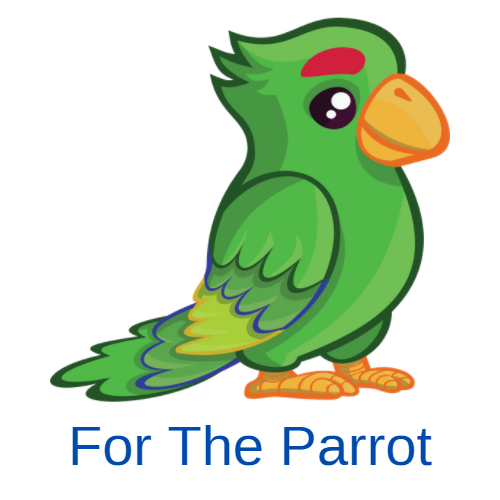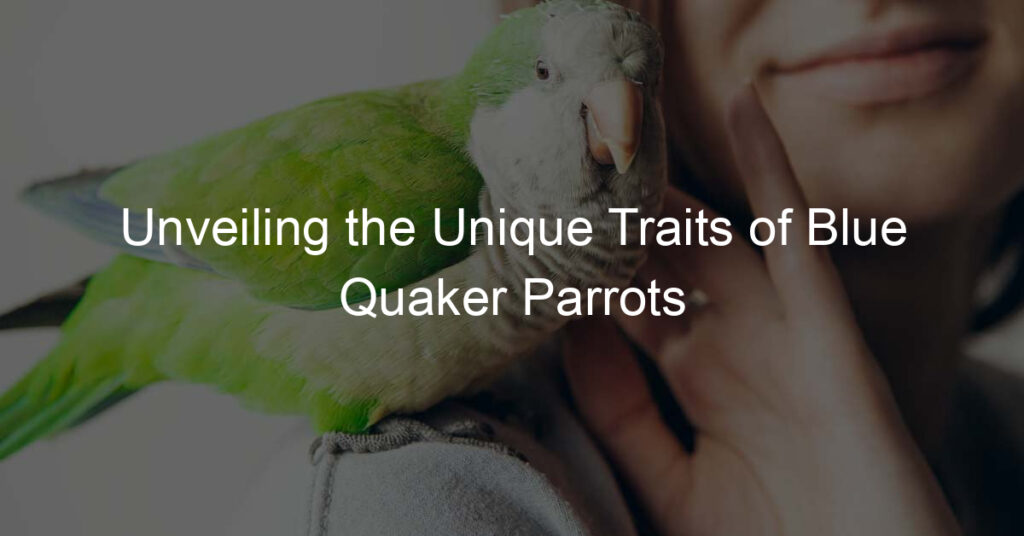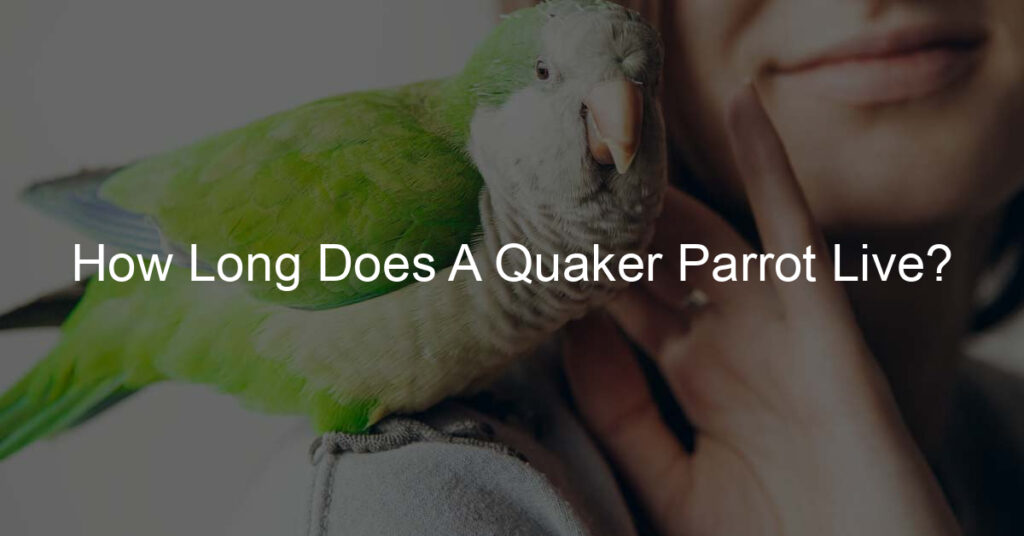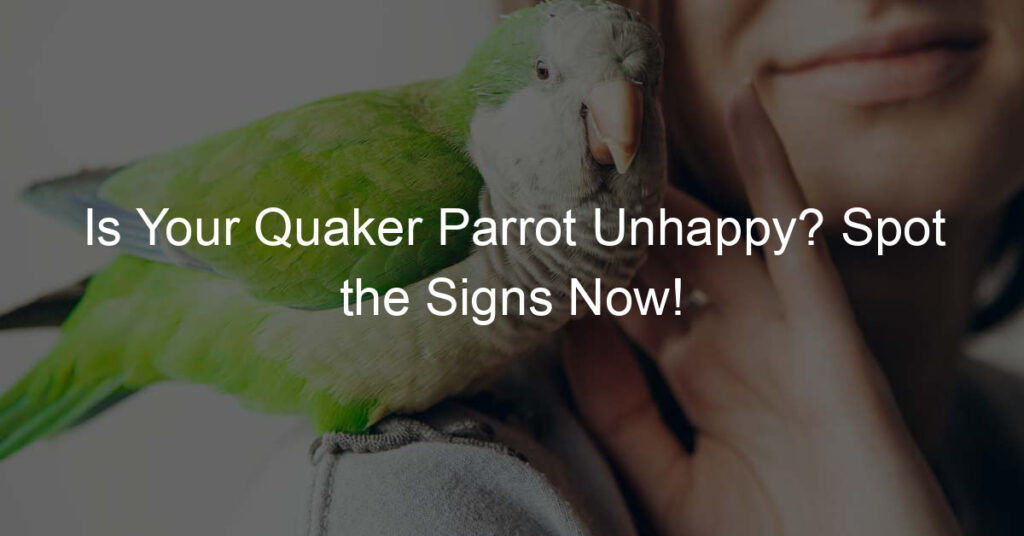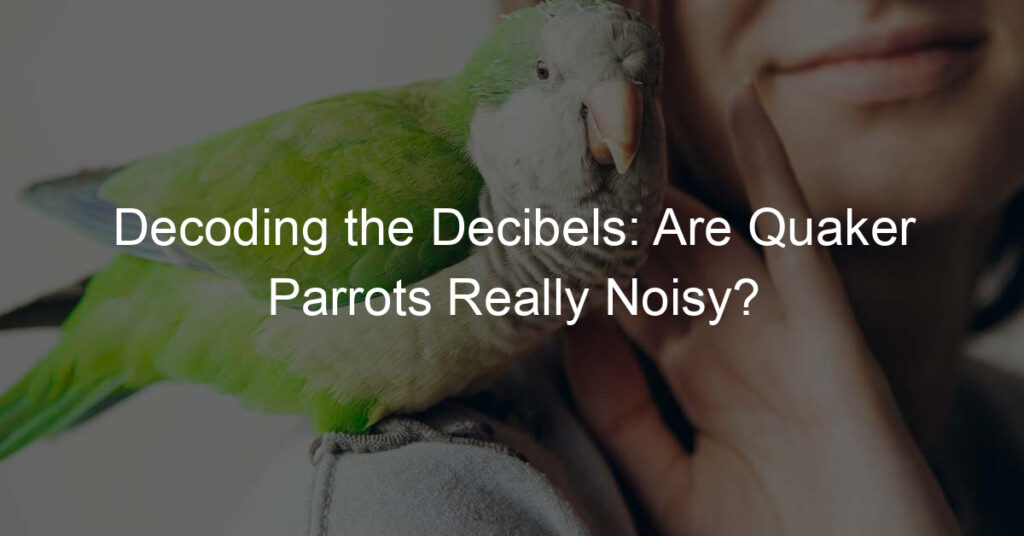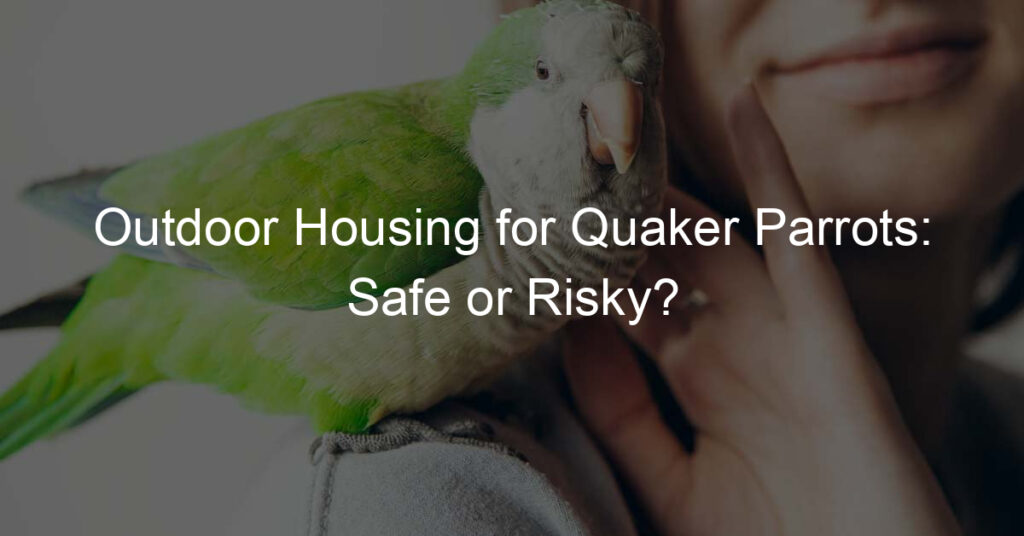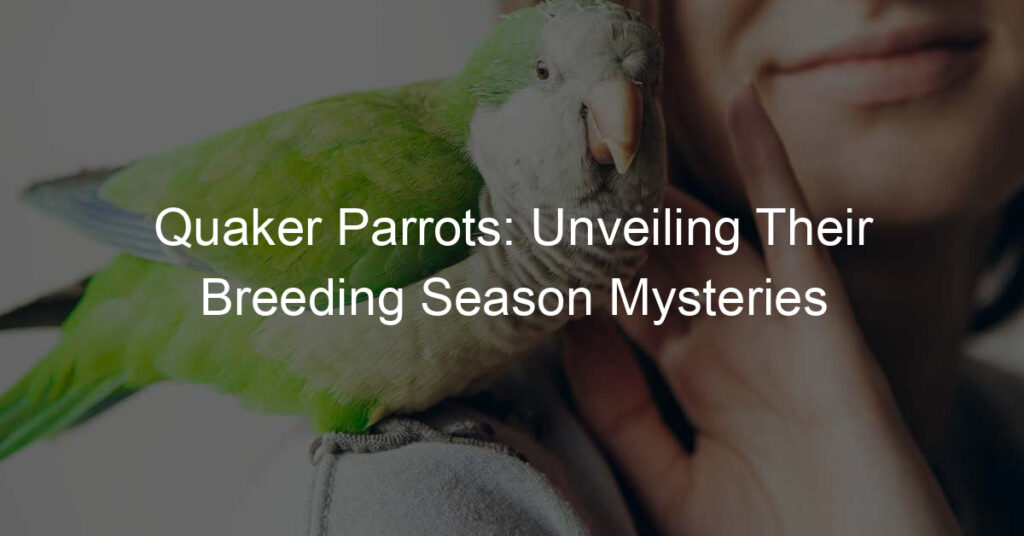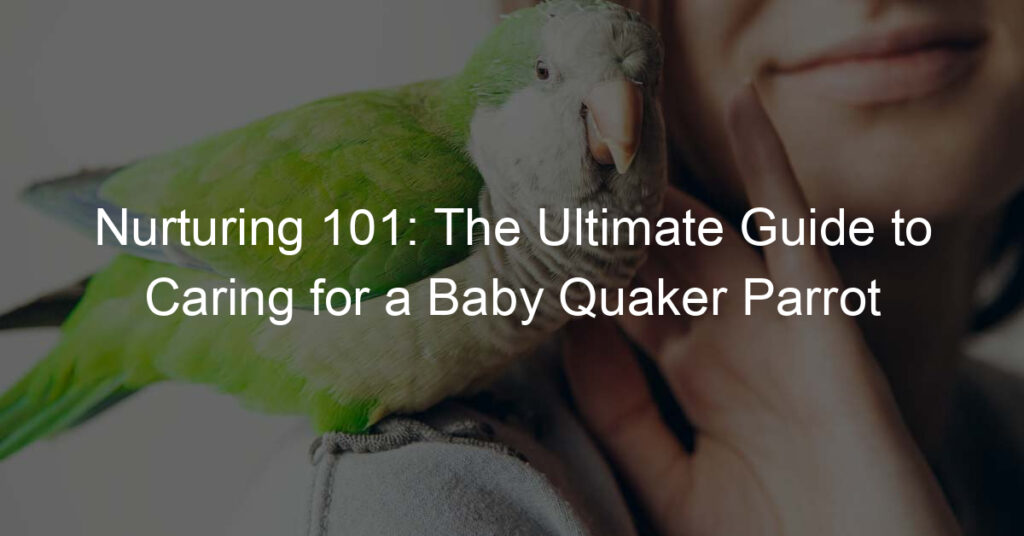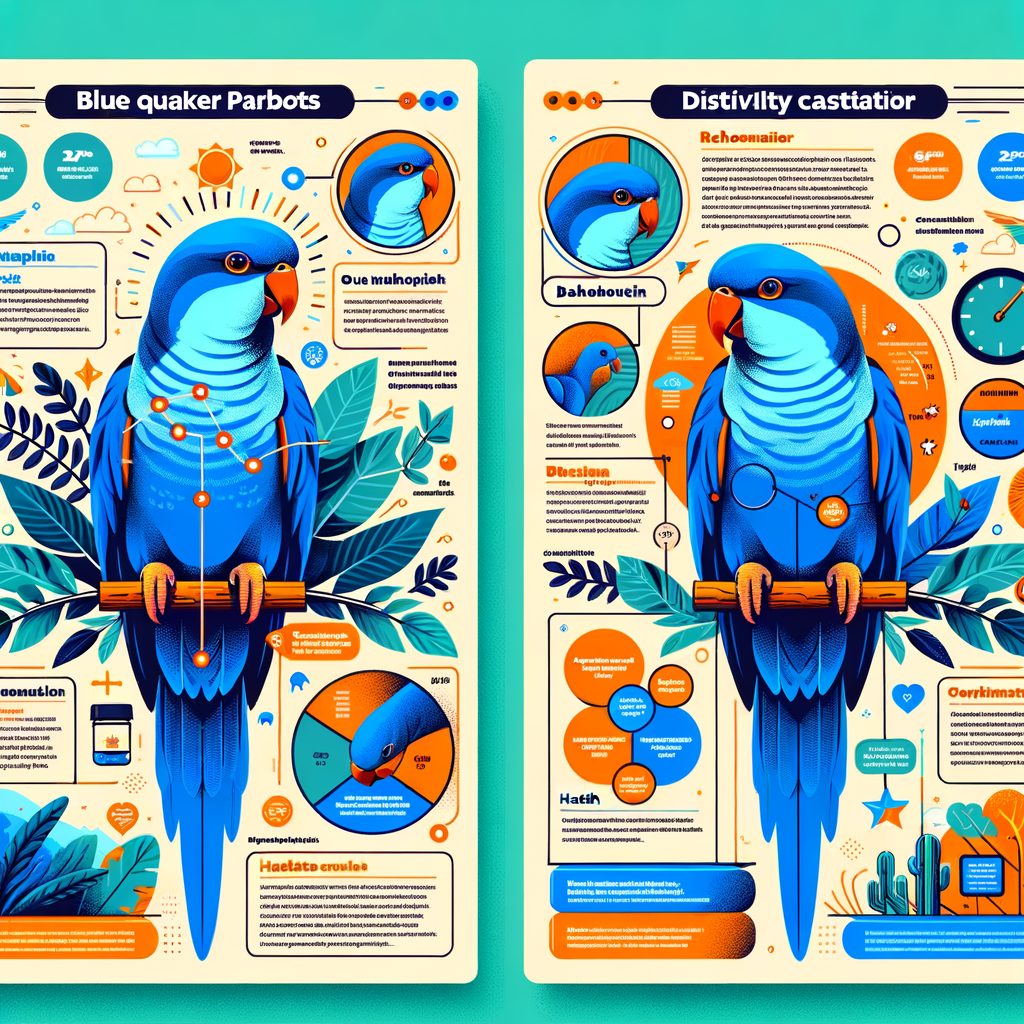
Introduction to Blue Quaker Parrots
Welcome to the fascinating world of Blue Quaker Parrots! These vibrant, intelligent birds are known for their captivating beauty and engaging personalities. In this section, we’ll provide an overview of these amazing creatures and delve into their origins and habitat.
- Overview of Blue Quaker Parrots
- Origin and Habitat of Blue Quaker Parrots
Blue Quaker Parrots, also known as Monk Parakeets, are a unique variant of the Quaker Parrot species. Their striking blue coloration is a result of selective breeding. These birds are medium-sized, typically measuring between 11-12 inches in length. They are known for their intelligence, sociability, and ability to mimic human speech. Blue Quaker Parrots make excellent pets, as they are relatively easy to care for and form strong bonds with their human companions.
Blue Quaker Parrots originate from the temperate regions of South America, specifically Argentina, Brazil, and Paraguay. However, due to their adaptability, they have successfully established wild colonies in various parts of the world, including North America and Europe. These birds prefer habitats with a mix of forest and open land, where they build large, communal nests in trees or on man-made structures. Despite their tropical origins, Blue Quaker Parrots are surprisingly hardy and can tolerate a wide range of climates.
Now that we’ve introduced you to Blue Quaker Parrots, let’s explore their unique features, understand their personality, and learn how to properly care for these wonderful birds in the following sections.
Unique Features of Blue Quaker Parrots
Blue Quaker Parrots, also known as Monk Parakeets, are fascinating creatures with unique features that set them apart from other bird species. In this section, we will delve into the physical characteristics of these beautiful birds.
Physical Characteristics of Blue Quaker Parrots
Blue Quaker Parrots possess a range of physical attributes that make them stand out. Let’s explore some of these features in detail.
- Size and Weight
- Color and Markings
- Life Expectancy
Blue Quaker Parrots are small to medium-sized birds. They typically measure between 11 to 12 inches in length from the beak to the tip of the tail. When it comes to weight, these parrots usually weigh between 90 to 120 grams. Despite their small size, they are known for their robustness and resilience.
As their name suggests, Blue Quaker Parrots are predominantly blue. They have a bright, vibrant blue color that covers most of their body, with a lighter shade on their chest and belly. Their most distinctive marking is a greyish-white patch on their forehead, which contrasts beautifully with their blue feathers. This unique coloration makes them easily recognizable.
Blue Quaker Parrots have a relatively long lifespan for birds of their size. With proper care and a healthy diet, they can live up to 20 to 30 years. This longevity makes them a long-term companion for those who choose to welcome them into their homes.
In conclusion, the unique physical characteristics of Blue Quaker Parrots – their size, vibrant color, and long life expectancy – make them a truly special bird species. These features, combined with their charming personality, make them a popular choice among bird enthusiasts.
Behavioral Traits of Blue Quaker Parrots
Blue Quaker Parrots, also known as Monk Parakeets, are known for their unique behavioral traits. These birds are not only beautiful but also intelligent, social, and communicative. Let’s delve into these traits in detail.
- Intelligence and Learning Ability
- Social Behavior
- Communication and Vocalization
Blue Quaker Parrots are incredibly intelligent. They have the ability to learn quickly, making them excellent pets for those who enjoy teaching their birds new tricks. They can learn to mimic sounds, recognize their names, and even perform simple tasks. Their intelligence level is comparable to that of a toddler, which makes them fascinating companions.
These birds are highly social creatures. They enjoy the company of their human family members and other birds. They thrive in environments where they can interact and play. Blue Quaker Parrots are known to form strong bonds with their owners, often seeking their attention and affection. However, they also need their own space and time to play and explore independently.
Blue Quaker Parrots are excellent communicators. They have a wide range of vocalizations that they use to express their feelings and needs. They can mimic human speech and other sounds they hear in their environment. Their ability to talk and mimic sounds is one of the reasons they are popular as pets. However, each bird is unique, and not all will choose to talk.
In conclusion, the behavioral traits of Blue Quaker Parrots make them interesting and engaging pets. Their intelligence, social behavior, and communication skills can provide endless entertainment and companionship for their owners. However, they also require a lot of care and attention to ensure they stay happy and healthy.
Understanding Blue Quaker Parrots Personality
Blue Quaker Parrots, also known as Monk Parakeets, are admired for their vibrant color and charming personality. They are known for their sociable nature and high energy levels. To better understand their personality, let’s delve into their interaction with humans, other birds, and their playfulness and energy level.
- Interaction with Humans
- Interaction with Other Birds
- Playfulness and Energy Level
Blue Quaker Parrots are known for their friendly and affectionate nature towards humans. They are quick to form strong bonds with their owners and enjoy spending time with them. These birds are also intelligent and can learn to mimic human speech, making them delightful companions. They are known to express their emotions through different sounds and body language, which makes the interaction even more interesting.
When it comes to interacting with other birds, Blue Quaker Parrots are quite sociable. They can get along well with other birds, especially when introduced at a young age. However, like all birds, they have their own personalities and preferences. Some may prefer the company of their own kind, while others may enjoy the company of different bird species. It’s important to monitor their interactions to ensure a harmonious environment.
Blue Quaker Parrots are known for their high energy levels and playful nature. They love to explore their surroundings and play with toys. These birds are active and require plenty of mental and physical stimulation to keep them happy and healthy. Their playful nature and energy make them entertaining companions, but also means they need a lot of care and attention from their owners.
In conclusion, Blue Quaker Parrots are friendly, sociable, and energetic birds that make wonderful pets. Understanding their personality will help you provide the right care and environment for them to thrive.
Blue Quaker Parrots Care Guide
When it comes to caring for your Blue Quaker Parrot, one of the most important aspects to consider is their diet and nutrition. A well-balanced diet is essential for their health and well-being.
Diet and Nutrition
Blue Quaker Parrots, like all parrots, require a varied diet to ensure they get all the nutrients they need. Let’s delve into the recommended foods and those to avoid for your feathered friend.
- Recommended foods
- Pellets: These should make up about 60% of your parrot’s diet. They are nutritionally balanced and can be found in pet stores.
- Fruits and Vegetables: Fresh fruits and vegetables should make up about 30% of their diet. Apples, bananas, carrots, and leafy greens are all good choices.
- Seeds and Nuts: These can be given as treats, but should not make up more than 10% of their diet as they are high in fat.
- Foods to avoid
- Avocado: This fruit contains a toxin that can be deadly to parrots.
- Chocolate: It contains theobromine, which is toxic to birds.
- Onions and Garlic: These can cause digestive issues in parrots.
- Alcohol and Caffeine: These substances can be harmful and potentially fatal to parrots.
Blue Quaker Parrots thrive on a diet that includes a variety of foods. Here are some recommendations:
Just as there are foods that are beneficial for your Blue Quaker Parrot, there are also foods that can be harmful. Here are some foods to avoid:
Remember, a balanced diet is key to keeping your Blue Quaker Parrot healthy and happy. Always consult with a vet if you have any concerns about your parrot’s diet.
Health and Wellness
Keeping your Blue Quaker Parrot healthy is a top priority. Let’s explore some common health issues and the importance of regular veterinary care.
- Common Health Issues
Blue Quaker Parrots, like all birds, can experience health problems. Here are some common issues:
| Health Issue | Description |
|---|---|
| Feather Plucking | This is when a parrot pulls out its own feathers. It can be due to stress, boredom, or health problems. |
| Respiratory Issues | Parrots can suffer from respiratory problems, often caused by poor air quality or infection. |
| Beak Problems | Issues with a parrot’s beak can include overgrowth or deformities, often due to malnutrition or injury. |
Remember, if you notice any changes in your parrot’s behavior or appearance, it’s important to seek advice from a vet.
- Veterinary Care
Regular check-ups with a vet who specializes in birds is crucial for your Blue Quaker Parrot’s health. They can spot early signs of illness and provide treatment options. Here’s what a typical vet visit might include:
- Physical Examination: The vet will check your parrot’s body, including its feathers, beak, and feet.
- Weight Check: Regular weight monitoring can help detect health problems early.
- Blood Tests: These can provide information about your parrot’s overall health and detect diseases.
Remember, prevention is better than cure. Regular veterinary care can help ensure your Blue Quaker Parrot stays happy and healthy.
Housing and Environment
When it comes to caring for your Blue Quaker Parrot, providing a suitable living environment is crucial. This includes a well-sized cage and a variety of toys for enrichment. Let’s explore these elements in detail.
- Cage Size and Setup
Blue Quaker Parrots need ample space to move, play, and spread their wings. A cage that is at least 18 inches long, 18 inches wide, and 24 inches high is recommended. However, bigger is always better when it comes to cages. The cage should have horizontal bars on at least two sides to encourage climbing and exercise.
Inside the cage, provide a variety of perches of different sizes and materials to keep your parrot’s feet healthy. Avoid placing perches directly above food and water dishes to prevent contamination. The cage should be placed in a quiet, well-lit area, away from drafts and extreme temperatures.
- Enrichment and Toys
Blue Quaker Parrots are intelligent and active birds that require mental stimulation to stay happy and healthy. Toys play a crucial role in providing this stimulation. A variety of toys, such as foraging toys, puzzle toys, and chew toys, should be included in the cage. Regularly rotating these toys will keep your parrot interested and engaged.
Remember, the toys you choose should be safe and appropriate for your parrot’s size. Avoid toys with small parts that can be swallowed or long strings that can cause entanglement. Always supervise your parrot when introducing a new toy.
| Aspect | Details |
|---|---|
| Cage Size | At least 18x18x24 inches, bigger is better |
| Cage Placement | Quiet, well-lit area, away from drafts and extreme temperatures |
| Toys | Foraging toys, puzzle toys, chew toys. Rotate regularly for variety |
| Toy Safety | No small parts or long strings. Supervise when introducing new toys |
Blue Quaker Parrots Facts and Details
Blue Quaker Parrots are fascinating creatures with a lot to offer. Let’s dive into some interesting facts and real-life examples that highlight their unique characteristics.
- Interesting facts about Blue Quaker Parrots
- Case studies and examples
Blue Quaker Parrots, also known as Monk Parakeets, are not naturally blue. They are a result of selective breeding, which gives them their unique color. They are known for their intelligence and can learn to mimic human speech. These parrots are also social creatures, often seen in groups in the wild. They have a lifespan of up to 20 years, making them long-term companions for those who choose to keep them as pets.
Let’s look at a few examples that demonstrate the intelligence and social nature of these birds. In one case, a Blue Quaker Parrot named ‘Polly’ was able to learn and mimic over 50 different words and phrases. Polly’s owner reported that the parrot would often initiate conversation, showing a high level of cognitive ability.
In another example, a group of Blue Quaker Parrots in Florida was observed working together to build a large communal nest. This behavior is rare among parrot species and shows the strong social bonds these birds form.
These facts and examples show just how unique and interesting Blue Quaker Parrots are. From their beautiful blue color to their intelligence and social nature, these birds are truly one-of-a-kind.
Conclusion: The Joy of Owearing a Blue Quaker Parrot
As we wrap up our discussion on Blue Quaker Parrots, it’s clear that these birds are more than just a pretty face. Their vibrant blue feathers and unique personality traits make them a joy to own and a wonderful addition to any family.
- Key takeaways
- Final thoughts on Blue Quaker Parrots
Blue Quaker Parrots, also known as Monk Parakeets, are renowned for their striking blue color and their intelligent, sociable nature. They are relatively easy to care for, making them an excellent choice for both novice and experienced bird owners. They have a long lifespan, often living up to 20 years or more with proper care. Their ability to mimic human speech and their love for interaction make them a delightful companion.
While owning a Blue Quaker Parrot requires a commitment of time and resources, the rewards are well worth it. Their charming personalities, intelligence, and beauty make them a joy to have around. Whether you’re teaching them new words, playing with them, or simply watching them explore their surroundings, every day with a Blue Quaker Parrot is a day filled with joy and wonder.
In conclusion, owning a Blue Quaker Parrot can be a fulfilling experience. These birds are not just pets, but companions that bring joy, laughter, and color into our lives. If you’re considering getting a Blue Quaker Parrot, we hope this guide has provided you with valuable insights to help you make an informed decision.
